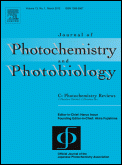
JOURNAL OF PHOTOCHEMISTRY AND PHOTOBIOLOGY C-PHOTOCHEMISTRY REVIEWS
metrics 2024
Illuminating Innovations in Photochemistry
Introduction
The JOURNAL OF PHOTOCHEMISTRY AND PHOTOBIOLOGY C-PHOTOCHEMISTRY REVIEWS, published by Elsevier, is a premier scholarly journal that serves as a critical resource for researchers and professionals in the field of photochemistry and photobiology. With a distinguished Q1 ranking in key categories such as Catalysis, Organic Chemistry, and Physical and Theoretical Chemistry, this journal consistently publishes high-impact articles that contribute significantly to the advancement of knowledge in these disciplines. The journal's rigorous peer-review process ensures the integrity and quality of the research it disseminates. Researchers benefit from its comprehensive review articles that discuss recent advancements, theoretical developments, and practical applications of photochemical processes, making it an essential read for anyone in the field. The journal's impact and relevance are evidenced by its impressive Scopus rankings, including a top percentile of 98th in Organic Chemistry. As the journal continues to explore innovative and interdisciplinary approaches, it stands out as a vital platform for sharing and discussing cutting-edge research findings within the community.
Metrics 2024
 2.48
2.48 12.80
12.80 14.90
14.90 106
106Metrics History
Rank 2024
Scopus
IF (Web Of Science)
JCI (Web Of Science)
Quartile History
Similar Journals
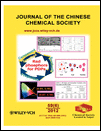
JOURNAL OF THE CHINESE CHEMICAL SOCIETY
Highlighting Breakthroughs in General ChemistryJOURNAL OF THE CHINESE CHEMICAL SOCIETY, published by WILEY-V C H VERLAG GMBH, is a vital resource in the field of chemistry, focusing on a broad array of topics pertinent to general chemistry and its advancing sub-disciplines. Established in 1954 and running through 2024, this journal serves as a significant platform for the dissemination of high-quality research, showcasing innovative findings and developments within the chemical sciences. With its Q3 category ranking and positioning at Rank #203 in General Chemistry per Scopus, it reflects the journal's commitment to research excellence and impact. While not an open-access publication, it ensures accessibility to a global audience, making it an essential tool for researchers, professionals, and students alike seeking to stay informed and engaged in the evolving landscape of chemistry.

Small Science
Bridging Disciplines Through Open Access ResearchSmall Science is an esteemed open-access journal published by WILEY, dedicated to pioneering research in the realms of catalysis, materials science, and chemical engineering. Established in 2021, this journal has rapidly gained recognition, ranking in the top quartiles (Q1) in various categories, including a remarkable 17th position in Materials Science and 8th in Chemical Engineering on Scopus. With an impact factor reflective of its growing influence and a commitment to disseminating cutting-edge knowledge, Small Science serves as a crucial platform for researchers, professionals, and students seeking to explore the latest advancements and applications in these dynamic fields. The journal's open-access model ensures wide reach and accessibility, facilitating collaboration and innovation across disciplines. Its headquarters are located in the United States, at 111 River St, Hoboken, NJ, supporting a global readership keen on addressing contemporary scientific challenges and driving progress in technology and materials synthesis.
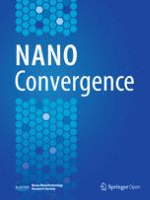
Nano Convergence
Exploring groundbreaking studies in the world of nanotechnology.Nano Convergence is a premier open access journal dedicated to the rapidly evolving fields of nanotechnology, materials science, and engineering. Published by SPRINGER, this journal has been at the forefront of interdisciplinary research since its inception in 2014, and is set to continue its journey until 2024. With an impressive impact factor and recognition as Q1 in both Engineering (miscellaneous) and Materials Science (miscellaneous) categories, Nano Convergence ranks among the top publications, listed as Rank #8 out of 307 in General Engineering and Rank #34 out of 463 in General Materials Science according to Scopus metrics. This journal provides a platform for researchers, professionals, and students to share pioneering studies that converge different disciplines within nanotechnology. With its commitment to open access, Nano Convergence ensures that cutting-edge research is readily available to the global community, fostering innovation and collaborative advancements in the field.
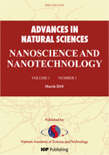
Advances in Natural Sciences-Nanoscience and Nanotechnology
Empowering Researchers with Cutting-Edge Nanotechnology FindingsAdvances in Natural Sciences-Nanoscience and Nanotechnology is a premier academic journal published by IOP Publishing Ltd, dedicated to the dynamic and rapidly evolving field of nanoscience and nanotechnology. With an ISSN of 2043-6254 and E-ISSN 2043-6262, this journal encompasses a diverse spectrum of research encompassing both theoretical frameworks and applied technologies, bridging the gap between engineering, industrial practices, and materials science. Holding a reputable position within the Q3 quartile for Electrical and Electronic Engineering, Q2 in Industrial and Manufacturing Engineering, and Q3 in Materials Science, it ranks significantly due to its robust review process and quality of articles. With a convergence span from 2010 to 2024, the journal aims to foster an open dialogue among researchers and professionals, providing essential insights into cutting-edge advancements and interdisciplinary applications in nanotechnology. The open access policy enhances visibility and accessibility, ensuring that every article extends its reach beyond the confines of traditional scholarly communication. Situated in the United Kingdom, this journal not only bolsters the global discourse on nanoscience but also serves as a critical resource for those at the forefront of research and innovation.

Bulletin of the University of Karaganda-Physics
Igniting Conversations in the World of Physics.Bulletin of the University of Karaganda-Physics is a distinguished open-access journal published by KARAGANDA STATE UNIVERSITY, dedicated to advancing the field of physics since its inception in 1996. With an ISSN of 2518-7198, the journal offers an essential platform for researchers, professionals, and students to disseminate and access high-quality, peer-reviewed articles covering a wide array of topics within physics. Operating from Kazakhstan, this journal plays a pivotal role in promoting scientific communication in the region and beyond by providing unrestricted access to its publications. Although specific metrics such as HIndex and Scopus rankings are currently unavailable, the Bulletin is committed to maintaining rigorous academic standards and fostering an engaging scholarly community. The journal not only aims to contribute to the academic literature but also to stimulate discourse among physicists and related disciplines, making it a valuable resource for anyone invested in understanding the complexities and advancements within the world of physics.
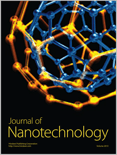
Journal of Nanotechnology
Leading the Charge in Nanotechnology ResearchThe Journal of Nanotechnology, published by Hindawi Ltd., is a premier open-access platform dedicated to delivering high-quality research in the dynamic field of nanotechnology. With the ISSN 1687-9503 and E-ISSN 1687-9511, this journal has been at the forefront of disseminating innovative findings since its transition to open access in 2009, fostering a global dialogue among researchers, professionals, and students. Based in Egypt, the journal maintains its commitment to advancing the material science sector, currently holding a prestigious Q2 ranking in the 2023 Materials Science (miscellaneous) category, reflecting its significant contribution to the field. With a Scopus ranking of #162 out of 463 journals in General Materials Science, placing it in the 65th percentile, the Journal of Nanotechnology serves as a crucial resource for those looking to explore the latest advancements and applications in nanomaterials. The journal invites submissions that align with its scope, which emphasizes interdisciplinary approaches and novel methodologies, promising to enhance both academic and practical aspects of nanotechnology.

Macroheterocycles
Driving Forward the Future of Organic ChemistryMacroheterocycles is a premier academic journal dedicated to the exploration and advancement of Analytical Chemistry and Organic Chemistry, published by the esteemed Ivanovo State University of Chemical Technology. Since its inception in 2008, this open-access journal has focused on providing a platform for innovative research and breakthrough discoveries in the field of heterocyclic compounds. With its current ranking in the Q3 quartile for Analytical Chemistry and Q4 quartile for Organic Chemistry, Macroheterocycles is rapidly establishing itself as a valuable resource for scientists, researchers, and students seeking to enrich their understanding of complex chemical structures and analytical techniques. Its comprehensive publication model ensures that the latest findings are accessible to a global audience, fostering collaboration and discourse in the scientific community. With ongoing contributions aimed at addressing contemporary challenges in chemistry, this journal is poised to make significant impacts in the field while encouraging the dissemination of knowledge within and beyond Russia.

Micro & Nano Letters
Pioneering research at the forefront of technology.Micro & Nano Letters is a prominent open-access journal published by WILEY, dedicated to advancing the fields of micro and nanoscale science and technology. Since its inception in 2007, the journal has been a valuable resource for researchers, professionals, and students, delivering high-quality research that supports innovation and collaboration in bioengineering, biomedical engineering, condensed matter physics, materials science, and nanoscience. With an impact factor that reflects its growing influence, Micro & Nano Letters has earned recognition in various Scopus categories, including a Q3 ranking in both Condensed Matter Physics and Materials Science as of 2023. Its commitment to open access, established in 2021, ensures that the latest developments in micro- and nanotechnologies are accessible to a global audience, fostering a multidisciplinary dialogue across academia and industry. The journal continues to play a critical role in disseminating cutting-edge research and promoting technological advancements worldwide.
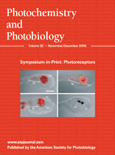
PHOTOCHEMISTRY AND PHOTOBIOLOGY
Advancing knowledge in photochemistry and its biological marvels.Photochemistry and Photobiology is a premier journal published by Wiley, dedicated to advancing the field of photochemistry and its applications in biology. With a long-standing history since its inception in 1962, this journal is recognized for its significant contribution to the understanding of light-driven processes, encompassing areas such as biochemistry, medicine, and theoretical chemistry. As evidenced by its impressive Q2 rankings in several categories, including Biochemistry and Physical and Theoretical Chemistry, Photochemistry and Photobiology is an influential resource for researchers and professionals worldwide. The journal's commitment to high-quality research is reflected in its solid standing within important Scopus ranks, marking it as a vital outlet for innovative studies that elucidate the roles of photochemical reactions in biological systems. While it operates on a traditional model rather than Open Access, the journal remains a crucial platform for exchanging knowledge and fostering collaborations across these interconnected disciplines. Explore the latest findings and contribute to the growing body of knowledge in this dynamic field.
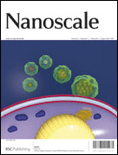
Nanoscale
Unveiling the Potential of Nanotechnology.Nanoscale is a premier academic journal published by the Royal Society of Chemistry, dedicated to advancing the field of nanoscience and nanotechnology. With both its ISSN (2040-3364) and E-ISSN (2040-3372) ensuring wide accessibility, the journal is renowned for its high-impact research contributions, reflected in its impressive 2023 Impact Factor and prestigious Q1 ranking in both Materials Science (Miscellaneous) and Nanoscience and Nanotechnology categories. Since its inception in 2009, Nanoscale has fostered a collaborative platform where leading researchers from around the globe share their innovative findings across a multitude of topics spanning from material synthesis to applications in nanotechnology. The journal not only serves as a valuable resource for professionals, researchers, and students but also actively engages the academic community in discussing emerging trends, thus shaping the future of nanoscience. Situated in the heart of the UK at Thomas Graham House, Science Park, Milton Rd, Cambridge CB4 0WF, Nanoscale remains a key publication for those looking to keep abreast of the latest breakthroughs in an ever-evolving field.